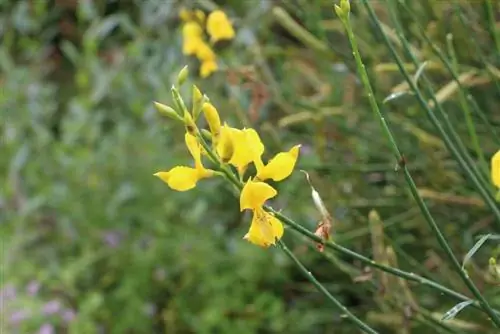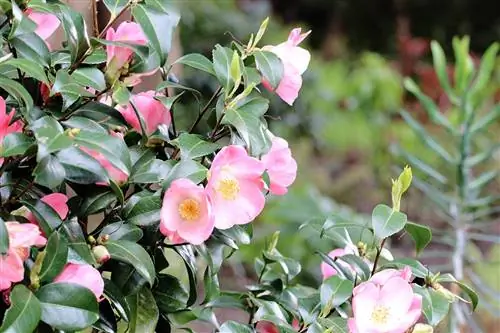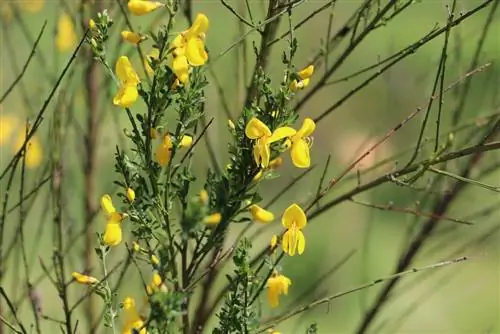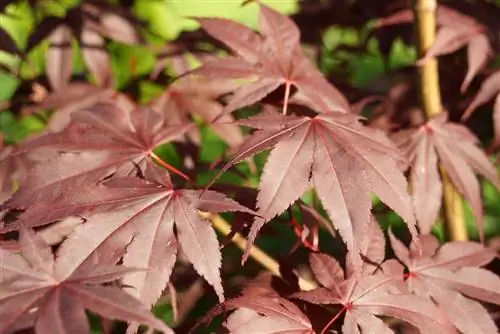- Author admin [email protected].
- Public 2023-12-17 03:39.
- Last modified 2025-01-24 12:45.
Numerous plants are grouped together under the name broom, which is why the frost and winter hardiness can vary significantly between the plants. The genus Cytisus are plants that are frost hardy to a certain extent, but usually require appropriate protection. Otherwise, frost damage can occur or the plants can even die completely. With our tips it works.
Cytisus
Strictly speaking, Cytisus is not real gorse, but rather the genus Geißklee. Nevertheless, some representatives of this genus are referred to as broom species. These include:
- Broom
- ivory gorse
- multi-flowered broom
They are generally considered hardy up to temperatures of 12.2 °C. In regions with mild winters they can therefore remain outdoors. However, if protection is inadequate, it is still possible for significant frost damage to occur. The plants can then freeze to the trunk or even die completely. If the variety and origin are unknown, either comprehensive protection should be provided or wintering indoors should be preferred.
Freeland
If Cytisus are planted outdoors, they should be given an appropriately protected location. A bright spot but protected from cold wind is ideal. This can promote safe wintering. However, in cold regions or winters, just choosing a sheltered location is not enough. Further measures are then necessary to protect the plant and overwinter safely. These measures include, among others:
- Stop fertilization in September
- Avoid waterlogging
- Administer small amounts of water on frost-free days if the substrate is too dry
- cover the substrate around the bush well with mulch, straw, brushwood or garden fleece
These measures can reduce potential frost damage and preserve the shrub. However, it is usually better to culture in a bucket, as this makes overwintering easier and safer.
Overwintering in pot culture
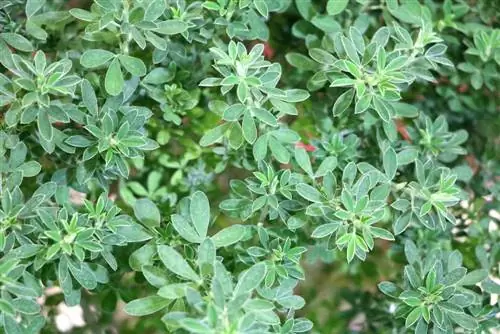
Overwintering broom in pots is comparatively easy if a few points are taken into account. Light and temperature in particular are crucial factors. Our step by step instructions show how to do it:
Do not fertilize the plant from September onwards
Because from this point on, the plant can no longer utilize the nutrients properly, which can lead to damage to the roots.
Decrease the amount of water
Waterlogging can also cause problems during wintering. Therefore, during preparation from September onwards, the amount of watering should be reduced and the substrate kept drier - but not completely dried out.
Get to the house on time
The broom plants should be brought indoors before the first night frost occurs. It is ideal if the plants are brought to their winter quarters for overwintering when the indoor and outdoor temperatures are approximately the same. If the temperature is 10°C indoors, the potted plant should be placed indoors when the outside temperatures drop to this level. This means there are no strong fluctuations.
The warmer, the brighter
A cool but frost-free location with temperatures between 5 and 10 °C is ideal for overwintering the broom family. However, it's not just the temperature that matters, but the relationship between temperature and brightness. The warmer the plant is, the more light it needs. In very bright winter quarters, such as a glazed winter garden or near a window, temperatures can be higher.
Appropriate care
Caring for broom during wintering is very simple. It does not tolerate waterlogging or drought. Therefore, water is used sparingly so that the substrate does not dry out completely but is also not completely moistened or watered. In addition, damaged plant parts should be removed immediately. Otherwise, they could represent entry points for diseases and parasites that can very quickly cause significant damage during overwintering.
Tip:
Good ventilation is also crucial in winter quarters so that diseases and parasites cannot spread. The plants should therefore not be too close together and the room should be sufficiently ventilated. To ensure that the temperatures do not fluctuate too much, a short burst of ventilation is sufficient.
Protected outdoors
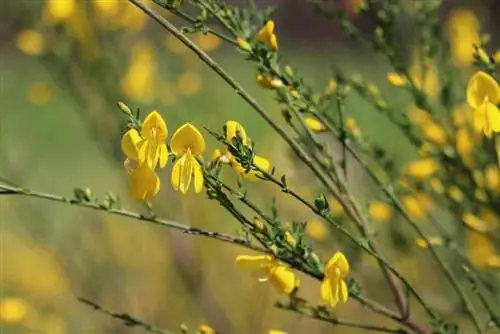
In regions with mild winters or in winters without serious sub-zero temperatures, Cytisus plants can also be left outdoors in pots, provided they are hardy. In this case, however, they also require appropriate protection and adapted care. Please note the following points:
Put in a protected place
For example, wind-protected locations near house walls or corners on terraces and balconies are ideal. It is important that the plant still receives sufficient light but is not exposed to the blazing winter sun.
Insulation from below
To prevent the root ball from freezing, the bucket should be insulated from below. For example, it makes sense to place the planter on a thick Styrofoam plate or a pallet to create distance from the ground. The materials can also be combined with each other to provide appropriate protection in colder winters.
All-round protection
In addition to insulating the floor, the bucket should also be protected all around. This can be achieved, for example, by wrapping it with garden fleece or other insulating materials. It is beneficial to apply several layers. This further enhances the protective effect. The materials used should also cover the substrate and be attached to the trunk to completely protect the root ball.
Adapted watering
Even in winter, the substrate must not dry out completely. For this reason, it should be checked and slightly moistened if necessary on frost-free days. However, urgent care must be taken to ensure that no waterlogging occurs. Otherwise, significant damage to the plant can occur.
After wintering
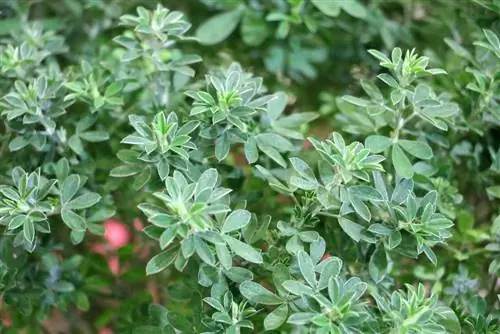
In order to avoid damage caused by late frost, among other things, a few factors should be taken into account even after wintering. These include, among others, the following measures:
Avoid late frost
Plants that have been overwintered indoors can be brought outside again if the temperatures are between 5 and 10 °C at night and late frosts are no longer expected. If the plants were outside, the protection should only be removed after the last frost.
Slow habituation
If the plants have been overwintered indoors, they should not be placed directly outdoors in potentially cold wind and blazing sun. It is better to initially choose a sheltered location so that the gorse can slowly get used to the sun and other weather influences.
Adjust care
As the temperatures rise and the days become longer again, the amount of watering must also be increased. However, it still applies that the top layer of soil should dry out before the next watering. Fertilizer application can be started again when the first new shoots appear on the plant.
Tip:
The time immediately after overwintering is ideal for pruning Cytisus and other gorse. Size often plays a role, especially with plants grown in containers, and must therefore be checked.

